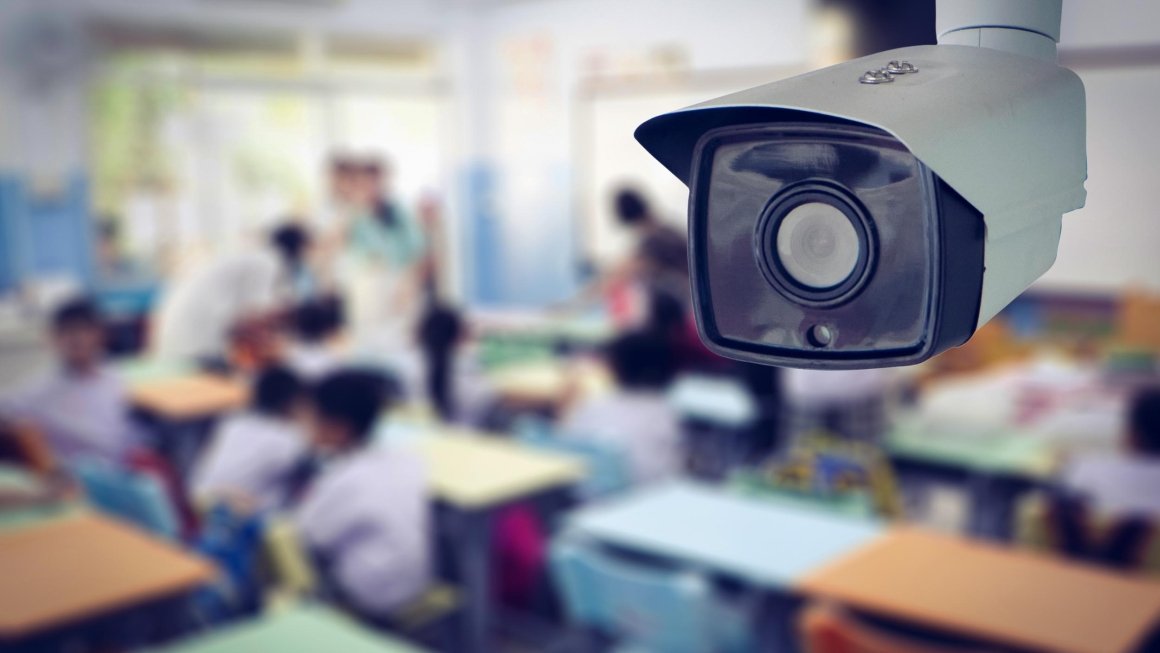
Do Security Cameras In Public Schools Make Students Feel Safer?
New research from the Curry School of Education and Human Development says “yes and no.”
In the wake of deadly shootings like those at Columbine High School, Sandy Hook Elementary School and many others, officials have implemented a variety of security measures to try to make school buildings safer.
According to the National Center for Educational Statistics, in the 2015-16 school year, 94 percent of public schools reported that they controlled access to school buildings by locking or monitoring doors. Eighty-one percent reported deploying security cameras and 25 percent of schools said they used dogs to detect drugs.
But is all this activity making students feel safer? New research from the University of Virginia says “yes and no.”
The study found that cameras positioned outside of schools – at entrances, exits and in parking lots – do appear to be associated with students feeling safer, said Catherine Bradshaw, a professor in the Curry School of Education and Human Development who was the primary investigator of the study.
“But inside the school, these cameras may have a different impact on students,” she said. “In fact, our findings suggested that for some students, in particular African-American students, they may feel like Big Brother is watching them.”
The data were collected beginning in the spring of 2014 at 98 middle and high schools across the state of Maryland. More than 54,000 students of varied backgrounds completed the study’s surveys. Data also were collected by trained external observers. The results were recently published in the Journal of Adolescent Health.
Prior to the study, little was known about cameras’ effects on students’ perceptions of safety, particularly for minority students. Bradshaw said she and her colleagues conducted this particular study because of the increasing trend in the use of cameras, metal detectors and police officers (or school resource officers) to try to improve school safety. They decided to explore the differences in perceptions by students’ race because of the broader conversation nationally about students of color receiving harsher disciplinary treatment in schools and not feeling as safe in schools compared to their white peers.
What Security Looks Like in Schools
Security can look different depending on whether a school is in an urban, suburban or rural area, Bradshaw said. Many urban schools have metal detectors, have a school resource officer on duty and perhaps bars on some windows to try to restrict access. There is also an increase in the use of bulletproof glass and other procedures to try to restrict access into schools.
Many schools are making considerable financial investments in security measures and beefing up their procedures for screening visitors who try to come into the school. “Quite often you’re asked to show an I.D. that might be run through a machine to be able to log in visitors to the school, or even conduct background checks on visitors,” Bradshaw said. “Sometimes they will even print out a name badge that has a picture of your face on it.”
And then there are the closed-circuit security cameras. “You see them all over the place in schools these days, but interestingly, the cameras are rarely used for real-time surveillance. For example, if there is a fight in a back hallway, chances are no one is monitoring the live footage. But school administrators might pull the tape afterward to investigate the incident.”
In suburban and rural areas, schools use fewer cameras and metal detectors, Bradshaw said, “and maybe one school resource officer is employed for multiple schools, rather than one assigned uniquely to each school like we see in more urban schools.”
Because of growing concerns about the recent uptick in school shootings, like the one that resulted in the deaths of 17 people last February in Parkland, Florida, officials continue to seek ways to prevent more violence and death. Bradshaw said it’s a tough issue. “As parents, you want to try to figure out how to keep the bad guys out, but we also need to be thinking more about what could we be doing every day to prevent these kinds of issues?’”
While these school security measures are well-intentioned, “It’s important for schools to think about how these different strategies might be perceived in some settings relative to others, and in turn, how people from different backgrounds might perceive them differently.
“Although we can’t draw causal inferences from this study,” she continued. “I think these findings suggest that adults might feel better about having the cameras there and other similar types of these security measures in place. But kids may have a different perception.”
Bradshaw added that the cameras are very expensive and that in instead of looking for quick solutions, policymakers should consider other types of investments focused on the prevention of behavioral and mental health concerns.
